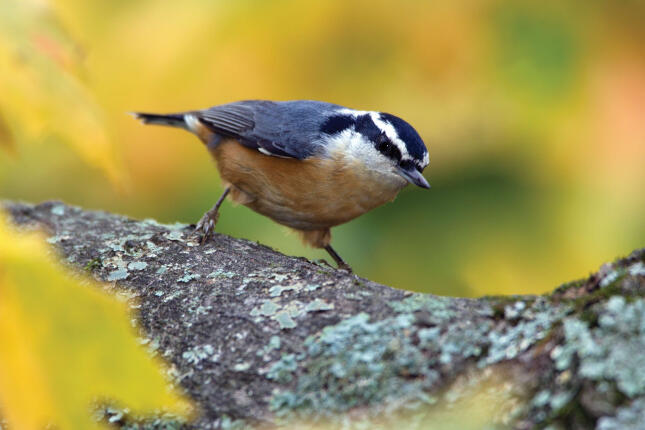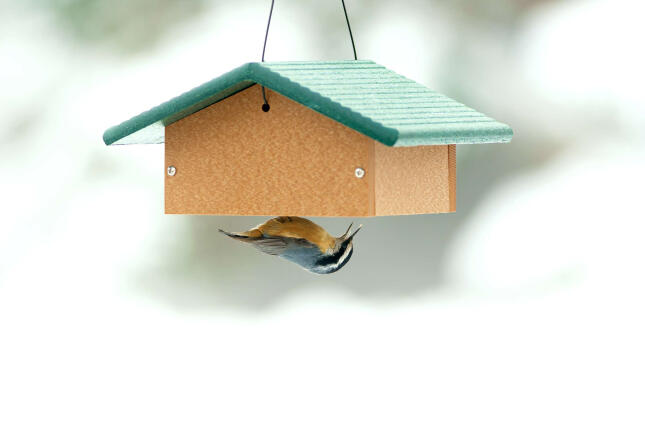Bird of the Month: Red-Breasted Nuthatch
|
Our Bird of the Month for January is the Red-Breasted Nuthatch! These coniferous-dwelling birds are easily identified by the way they travel down trees head-first! While woodpeckers use their tails to stabilize themselves on trees, nuthatches can rely on their strong legs and are comfortable deftly hopping up and down the tree at their leisure. While both White and Red-Breasted Nuthatches are frequent customers at feeders, Red-Breasted Nuthatches are less inclined to use manmade birdhouses. They prefer to excavate a cavity in a tree themselves and smear the outsides of the entrance with pine resin, sometimes using tree bark as an applicator. When entering or leaving their new home, they simply tuck and dive through the entrance to keep from getting stuck! What do they eat?In the summer, nuthatches will scour trees primarily for insects, switching more to seeds and cached food as the temperature drops. At feeders, they enjoy eating peanuts, sunflower seeds, and suet. Due to their capable claws, they’ll cling to just about any surface, and will eat from vertical feeders, tube feeders, and even upside down feeders as well! Staff ThoughtsNick: “As I’ve learned to better identify birds, nuthatches have been a great example to watch how they move, rather than just how they look. Whether it’s how they hop on trees or bob in flight, I love to watch them!” Ginger: “I was excited at the beginning of the winter season when they showed up at my window feeder. They’re so cute!” Michael: “We’ve been lucky enough to have a pair of Red-Breasted Nuthatches as daily visitors to our feeders over the last few winters and they’ve become some of our favorite birds to watch. They seem to be very easy going yet brave birds, often visiting our feeders moments after they’ve been refilled and while I’m still within arm’s reach - so fun to get a close-up look at them!” Winter Irruption Alert!This winter, due to poor crops in the boreal forest from central Quebec westward to Manitoba, a greater flight of birds is predicted to move through the US. This irruptive movement is expected to be mainly comprised of Redpolls, Pine Siskins, Evening and Pine Grosbreaks, Crossbills, Purple Finches, Red-Breasted Nuthatches, Bohemian Waxwings, and Blue Jays. You might seem some in your area! |
|
Share your photos of Northern Cardinals at your feeders with us in-store or on our Facebook or Instagram pages!



